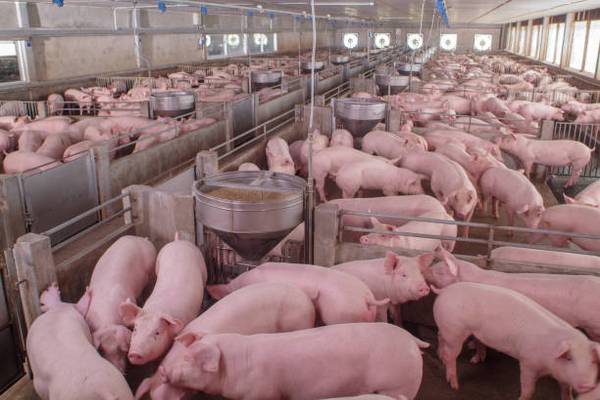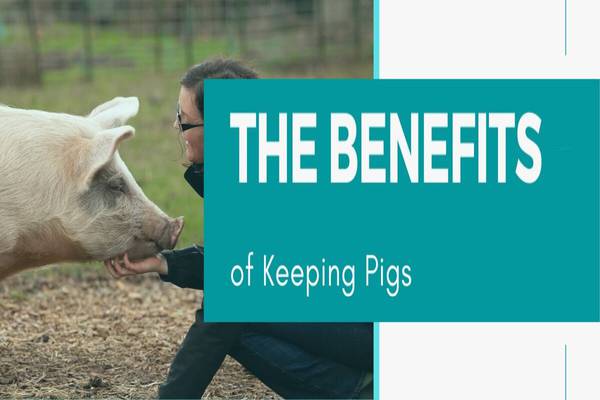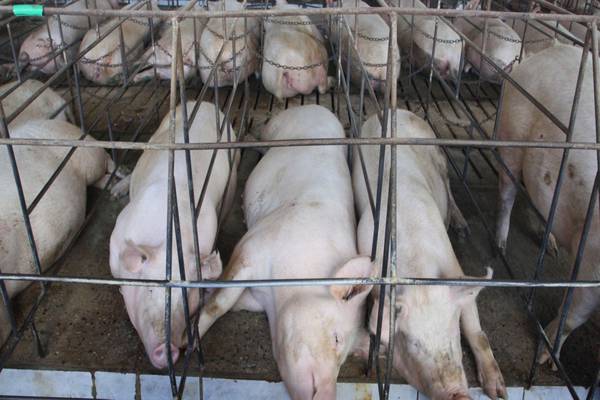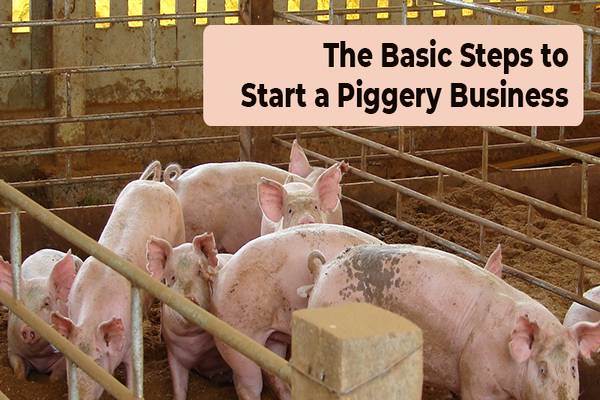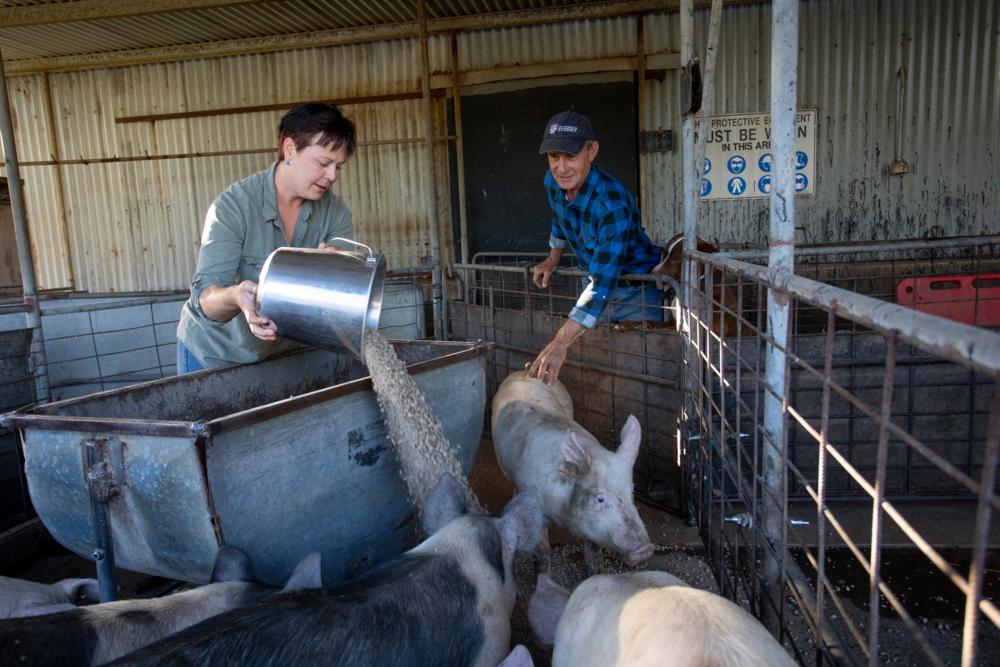Discover The World Of Pig Farming
Drafted by: vijaychourey26@gmail.com
Pig farming, also known as swine husbandry, is a crucial sector in the global livestock industry. This article delves into the intricate details of pig farming, from understanding the basics to implementing best practices for successful pig rearing. Pig farming holds significant importance globally due to the versatile uses of pigs for meat production, leather, and even medical research. Different pig breeds have varying characteristics that suit diverse production goals. Success in pig farming is influenced by factors like breed selection, proper housing, nutrition, and disease management.
Pig Breeds For Pig Farming
Popular Breeds for Commercial Pig Farming
Duroc
The Duroc breed is known for its rapid growth and efficient feed conversion. With its reddish-brown coat and excellent meat quality, Duroc pigs are favored in the pork industry for their lean meat and consistent marbling.
Yorkshire
The Yorkshire, or Large White, is renowned for its mothering abilities and large litters. Their white color and long body make them easily recognizable. Yorkshire pigs are popular for their lean meat and suitability for intensive farming systems.
Hampshire
Hampshire pigs are recognized for their distinctive black color and white belt around their shoulders. They are prized for their meat quality, especially their well-marbled pork, and are often used in crossbreeding programs.
Heritage Pig Breeds
Berkshire
Berkshire pigs are known for their marbled meat and gentle temperament. With their black coat and white points, they are a popular choice among chefs for their high-quality pork, often referred to as "Kurobuta."
Tamworth
Tamworth pigs are known for their ginger-red coat and hardiness. They are excellent foragers and thrive in free-range systems. The meat of Tamworth pigs is flavorful and sought after by those who appreciate traditional pork flavors.
Gloucestershire Old Spot
Easily recognized by their white coat and black spots, Gloucestershire Old Spot pigs are docile and well-suited for pasture-based systems. They are known for their maternal instincts and are often chosen for raising piglets outdoors.
Specialty Pig Breeds
Mangalitsa
Mangalitsa pigs stand out with their thick, curly coats that resemble sheep's wool. They are prized for their high-fat content, making them suitable for producing gourmet-quality cured meats like prosciutto.
Kune Kune
Originating from New Zealand, Kune Kune pigs are small, friendly, and easy to manage. They are often kept as pets but can also be raised for meat. Their adaptability and friendly nature make them a great choice for beginners.
Pot-bellied Pig
Pot-bellied pigs, originally from Southeast Asia, have gained popularity as companion animals. They are known for their small size and distinct potbelly shape. Despite their size, they require proper care and attention.
Pig Breeds for Small-Scale Farming
Vietnamese Pot-bellied
Vietnamese Pot-bellied pigs are a small breed with a distinctive potbelly and straight tail. They are easy to handle and suitable for small homesteads, where they can serve both as pets and sources of meat.
Kunekune
Kunekune pigs hail from New Zealand and are characterized by their placid nature and small size. They are excellent grazers and can thrive on pasture-based diets, making them ideal for sustainable farming practices.
Ossabaw Island
Ossabaw Island pigs are a feral breed originating from an isolated island off the coast of Georgia, USA. Due to their wild ancestry, they are highly adaptable and known for their hardiness, making them suitable for diverse farming environments.
Benefits Of Pig Farming
1. High Meat Production
Pigs are prolific meat producers, offering a substantial amount of high-quality protein-rich meat. This makes pig farming an attractive option for meeting the growing demand for meat.
2. Efficient Feed Conversion
Pigs possess an excellent feed conversion rate, which means they efficiently convert feed into meat. This makes pig farming cost-effective in terms of feed utilization.
3. Utilization of Byproducts
Pigs can be fed with a wide range of byproducts such as kitchen scraps, vegetable waste, and agricultural residues. This helps in minimizing waste while providing an additional source of income.
4. Fertilizer Production
Pig manure is rich in nutrients, making it an excellent organic fertilizer for crops. This closes the nutrient cycle in farming systems and reduces the need for synthetic fertilizers.
Types Of Pig Farming
1. Intensive Farming
Intensive pig farming involves raising pigs in a confined space with controlled environments. This method maximizes production by closely managing factors such as temperature, humidity, and nutrition.
2. Free-Range Farming
Free-range pig farming allows pigs to roam freely in open spaces, providing them with a more natural environment. This method is often preferred by consumers looking for ethically raised and better-flavored pork.
3. Organic Pig Farming
Organic pig farming focuses on producing pork without the use of synthetic chemicals, antibiotics, or genetically modified organisms. It emphasizes animal welfare and sustainable practices.
4. Backyard Pig Farming
Backyard pig farming is suitable for small-scale farmers or individuals interested in raising pigs for personal consumption. It requires minimal investment and can be a rewarding hobby.
Setting Up A Pig Farm
1. Selecting the Right Breeds
Choose pig breeds that are well-suited to your farming goals. Some breeds are known for their meat quality, while others excel in reproduction and mothering abilities.
2. Housing and Infrastructure
Provide comfortable and well-ventilated housing for pigs to prevent stress and disease. Ensure proper drainage and waste management systems.
3. Nutrition and Feeding
Develop a balanced feeding plan that meets the nutritional requirements of pigs at different growth stages. Consult with a veterinarian or animal nutritionist for guidance.
4. Health Management
Regularly monitor the health of your pigs and vaccinate them against common diseases. Maintain a clean environment to prevent the spread of infections.
5. Breeding and Reproduction
Implement a breeding program to ensure a steady supply of piglets. Understand the reproductive cycle of pigs and provide proper care to pregnant and nursing sows.
Factors To Consider
When choosing a pig breed, consider factors like climate, available space, and resources. Some breeds are better suited to specific climates, while others may thrive in confinement or pasture-based systems.
Challenges In Pig Farming
The Economic Landscape
Fluctuating Market Prices
One of the primary challenges in pig farming is navigating the unpredictable market prices for pork products. Factors such as supply and demand, international trade, and consumer preferences can lead to substantial fluctuations in prices. This volatility can impact a farmer's profitability and long-term planning.
Feed Costs and Efficiency
The cost of pig feed constitutes a significant portion of the overall expenses in pig farming. Rising feed costs can squeeze profit margins. Farmers need to balance providing high-quality nutrition to their pigs while also optimizing feed efficiency to control costs.
Health and Disease Management
Biosecurity Measures
Maintaining biosecurity is a critical aspect of pig farming. Preventing the introduction and spread of diseases within a swine herd is essential to avoid devastating outbreaks. Farmers must implement strict biosecurity protocols, such as limiting visitor access, disinfection procedures, and isolation of new animals.
Disease Outbreaks
Pigs are susceptible to various diseases, including African Swine Fever and Porcine Epidemic Diarrhea. These diseases can lead to significant economic losses due to increased mortality rates and trade restrictions. Early detection, rapid response, and proper quarantine measures are crucial in preventing the spread of these diseases.
Environmental Concerns
Waste Management
Pig farming generates a substantial amount of waste, including manure and other byproducts. Improper waste management can lead to water and soil pollution, posing risks to both the environment and public health. Sustainable waste management practices, such as composting and proper storage, are essential to mitigate these concerns.
Odor and Air Quality
The odor emanating from pig farms can be a source of conflict with nearby communities. Additionally, poor air quality due to ammonia emissions can impact the health of both pigs and farm workers. Implementing odor-reduction technologies and proper ventilation systems can help address these challenges.
Regulatory and Ethical Considerations
Animal Welfare Standards
As societal awareness about animal welfare grows, consumers and regulatory bodies are placing increasing importance on the ethical treatment of animals. Meeting these standards requires farmers to provide proper housing, nutrition, and healthcare to their pigs, which can be logistically and financially challenging.
Environmental Regulations
Pig farming is subject to various environmental regulations aimed at minimizing its impact on ecosystems. These regulations can require investments in technologies to reduce pollution, which may be financially burdensome for smaller-scale farmers.
Managing Growth And Development
Continuous monitoring of growth rates and weight gain allows for timely adjustments in feeding and management. Stress factors and aggressive behaviors can hinder growth, so creating a stress-free environment is vital. Employing growth enhancement techniques can lead to improved profitability.
Market and Economics
Understanding market trends and consumer preferences helps in making informed decisions regarding pig sales. Calculating ROI based on costs, feed, and healthcare expenses aids in financial planning.
Sustainability and Environmental Impact
Effective waste management is essential for reducing the environmental impact of pig farming. Embracing sustainable practices, such as using biogas digesters and organic fertilizers, contributes to a more eco-friendly approach without compromising profitability.
